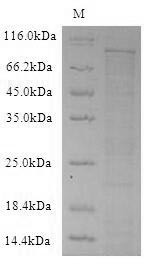Cookie preferences
This website uses cookies, which are necessary for the technical operation of the website and are always set. Other cookies, which increase the comfort when using this website, are used for direct advertising or to facilitate interaction with other websites and social networks, are only set with your consent.
Configuration
Technically required
These cookies are necessary for the basic functions of the shop.
"Allow all cookies" cookie
"Decline all cookies" cookie
CSRF token
Cookie preferences
Currency change
Customer-specific caching
FACT-Finder tracking
Individual prices
Selected shop
Session
Comfort functions
These cookies are used to make the shopping experience even more appealing, for example for the recognition of the visitor.
Note
Show the facebook fanpage in the right blod sidebar
Statistics & Tracking
Affiliate program
Conversion and usertracking via Google Tag Manager
Track device being used

NEW
If you have any questions, please use our Contact Form.
You can also order by e-mail: info@biomol.com
Larger quantity required? Request bulk
You can also order by e-mail: info@biomol.com
Larger quantity required? Request bulk
Organism: Mus musculus (Mouse). Source: in vitro E.coli expression system. Expression Region:... more
Product information "Dipeptidyl peptidase 4 (Dpp4), partial, mouse, recombinant"
Organism: Mus musculus (Mouse). Source: in vitro E.coli expression system. Expression Region: 29-760aa. Protein Length: Extracellular Domain. Tag Info: N-terminal 6xHis-SUMO-tagged. Target Protein Sequence: SKDEAAADSR RTYSLADYLK STFRVKSYSL WWVSDFEYLY KQENNILLLN AEHGNSSIFL ENSTFESFGY HSVSPDRLFV LLEYNYVKQW RHSYTASYNI YDVNKRQLIT EEKIPNNTQW ITWSPEGHKL AYVWKNDIYV KVEPHLPSHR ITSTGEENVI YNGITDWVYE EEVFGAYSAL WWSPNNTFLA YAQFNDTGVP LIEYSFYSDE SLQYPKTVWI PYPKAGAVNP TVKFFIVNID SLSSSSSAAP IQIPAPASVA RGDHYLCDVV WATEERISLQ WLRRIQNYSV MAICDYDKIN LTWNCPSEQQ HVEMSTTGWV GRFRPAEPHF TSDGSSFYKI ISDKDGYKHI CHFPKDKKDC TFITKGAWEV ISIEALTSDY LYYISNQYKE MPGGRNLYKI QLTDHTNVKC LSCDLNPERC QYYAVSFSKE AKYYQLGCWG PGLPLYTLHR STDHKELRVL EDNSALDRML QDVQMPSKKL DFIVLNETRF WYQMILPPHF DKSKKYPLLL DVYAGPCSQK ADASFRLNWA TYLASTENII VASFDGRGSG YQGDKIMHAI NRRLGTLEVE DQIEAARQFV KMGFVDSKRV AIWGWSYGGY VTSMVLGSGS GVFKCGIAVA PVSRWEYYDS VYTERYMGLP IPEDNLDHYR NSTVMSRAEH FKQVEYLLIH GTADDNVHFQ QSAQISKALV DAGVDFQAMW YTDEDHGIAS STAHQHIYSH MSHFLQQCFS LH. Purity: Greater than 90% as determined by SDS-PAGE. Endotoxin: Not test. Biological Activity: n/a. Form: Liquid or Lyophilized powder. Buffer: If the delivery form is liquid, the default storage buffer is Tris/PBS-based buffer, 5%-50% glycerol. If the delivery form is lyophilized powder, the buffer before lyophilization is Tris/PBS-based buffer, 6% Trehalose, pH 8.0. Reconstitution: We recommend that this vial be briefly centrifuged prior to opening to bring the contents to the bottom. Please reconstitute protein in deionized sterile water to a concentration of 0.1-1.0 mg/mL.We recommend to add 5-50% of glycerol (final concentration) and aliquot for long-term storage at -20 °C/-80 °C. Our default final concentration of glycerol is 50%. Customers could use it as reference. Storage: The shelf life is related to many factors, storage state, buffer ingredients, storage temperature and the stability of the protein itself. Generally, the shelf life of liquid form is 6 months at -20 °C/-80 °C. The shelf life of lyophilized form is 12 months at -20 °C/-80 °C. Notes: Repeated freezing and thawing is not recommended. Store working aliquots at 4 °C for up to one week. Relevance: Cell surface glycoprotein receptor involved in the costimulatory signal essential for T-cell receptor (TCR)-mediated T-cell activation. Acts as a positive regulator of T-cell coactivation, by binding at least ADA, CAV1, IGF2R, and PTPRC. Its binding to CAV1 and CARD11 induces T-cell proliferation and NF-kappa-B activation in a T-cell receptor/CD3-dependent manner. Its interaction with ADA also regulates lymphocyte-epithelial cell adhesion. In association with FAP is involved in the pericellular proteolysis of the extracellular matrix (ECM), the migration and invasion of endothelial cells into the ECM. May be involved in the promotion of lymphatic endothelial cells adhesion, migration and tube formation. When overexpressed, enhanced cell proliferation, a process inhibited by GPC3. Acts also as a serine exopeptidase with a dipeptidyl peptidase activity that regulates various physiological processes by cleaving peptides in the circulation, including many chemokines, mitogenic growth factors, neuropeptides and peptide hormones. Removes N-terminal dipeptides sequentially from polypeptides having unsubstituted N-termini provided that the penultimate residue is proline. Reference: "Structure of the mouse dipeptidyl peptidase IV (CD26) gene."Bernard A.-M., Mattei M.-G., Pierres M., Marguet D.Biochemistry 33:15204-15214(1994). Function: Cell surface glycoprotein receptor involved in the costimulatory signal essential for T-cell receptor (TCR)-mediated T-cell activation. Acts as a positive regulator of T-cell coactivation, by binding at least ADA, CAV1, IGF2R, and PTPRC. Its binding to CAV1 and CARD11 induces T-cell proliferation and NF-kappa-B activation in a T-cell receptor/CD3-dependent manner. Its interaction with ADA also regulates lymphocyte-epithelial cell adhesion. In association with FAP is involved in the pericellular proteolysis of the extracellular matrix (ECM), the migration and invasion of endothelial cells into the ECM. May be involved in the promotion of lymphatic endothelial cells adhesion, migration and tube formation. When overexpressed, enhanced cell proliferation, a process inhibited by GPC3. Acts also as a serine exopeptidase with a dipeptidyl peptidase activity that regulates various physiological processes by cleaving peptides in the circulation, including many chemokines, mitogenic growth factors, neuropeptides and peptide hormones. Removes N-terminal dipeptides sequentially from polypeptides having unsubstituted N-termini provided that the penultimate residue is proline.
| Keywords: | Dpp4, Cd26, Recombinant Mouse Dipeptidyl peptidase 4 (Dpp4), partial |
| Supplier: | Cusabio |
| Supplier-Nr: | CF007139MO |
Properties
| Application: | Activity not tested |
| Conjugate: | No |
| Host: | E.coli in vitro |
| Species reactivity: | mouse |
| MW: | 100.5 kD |
| Purity: | >90% (SDS-PAGE) |
Database Information
| KEGG ID : | K01278 | Matching products |
| UniProt ID : | P28843 | Matching products |
| Gene ID | GeneID 13482 | Matching products |
Handling & Safety
| Storage: | -20°C |
| Shipping: | +4°C (International: +4°C) |
Caution
Our products are for laboratory research use only: Not for administration to humans!
Our products are for laboratory research use only: Not for administration to humans!
You will get a certificate here
Viewed


